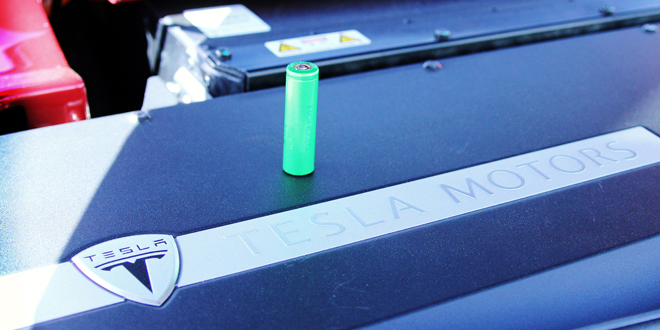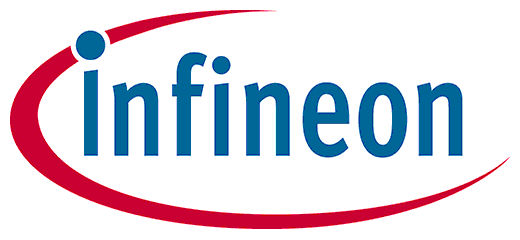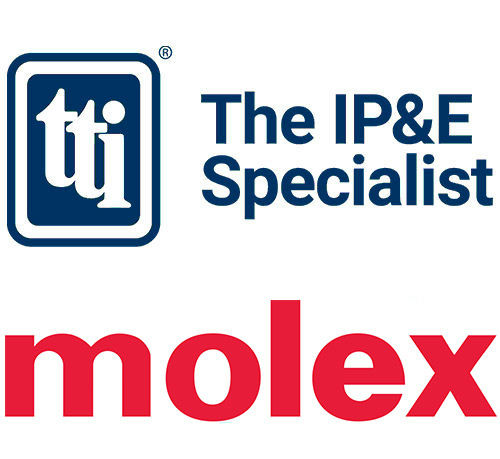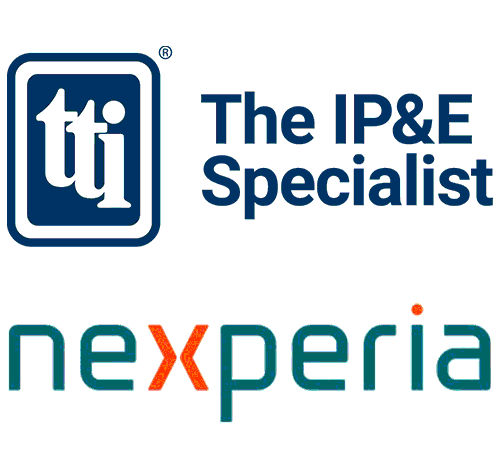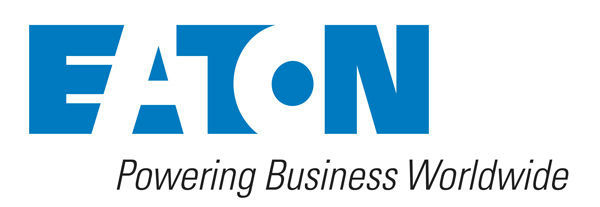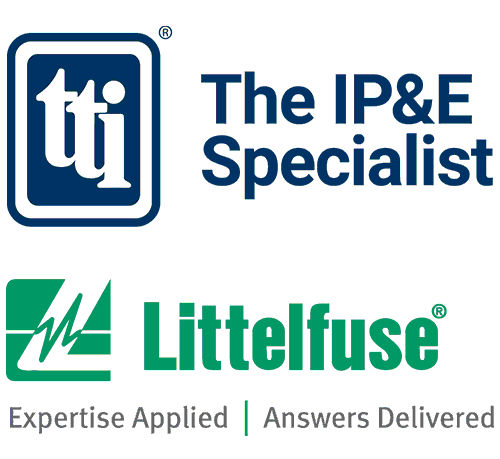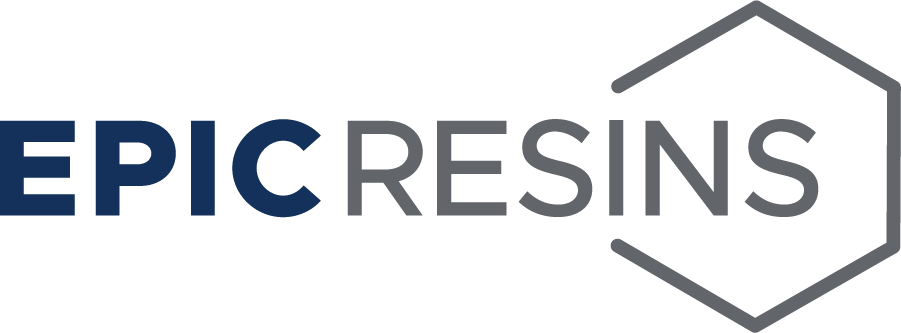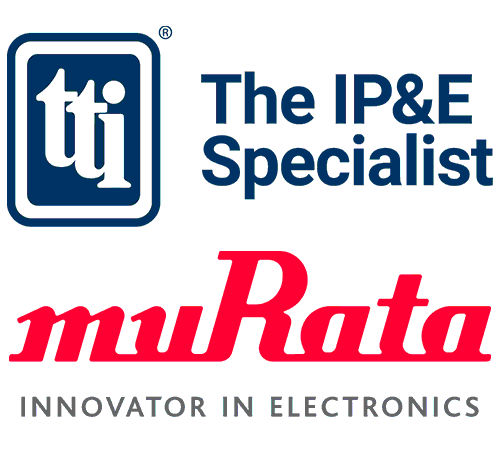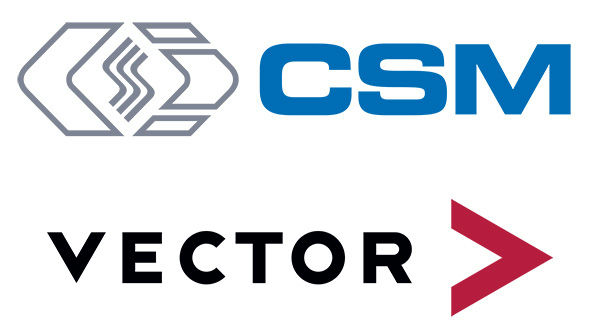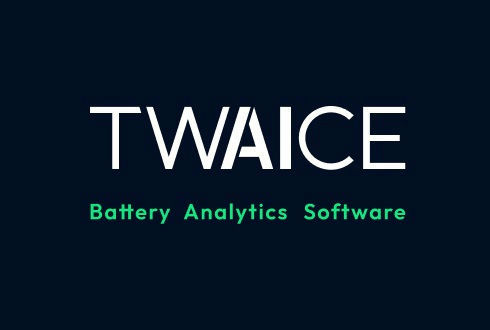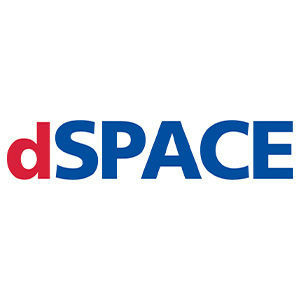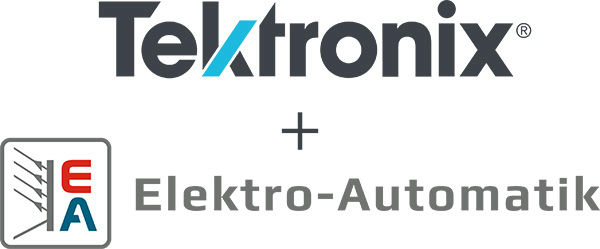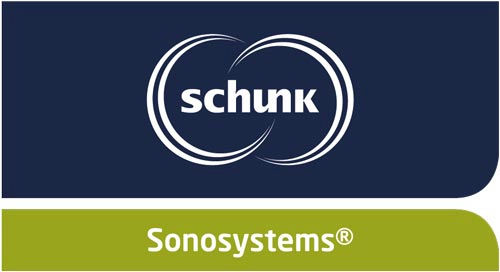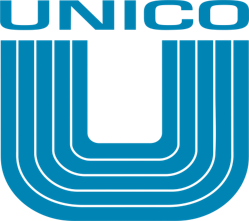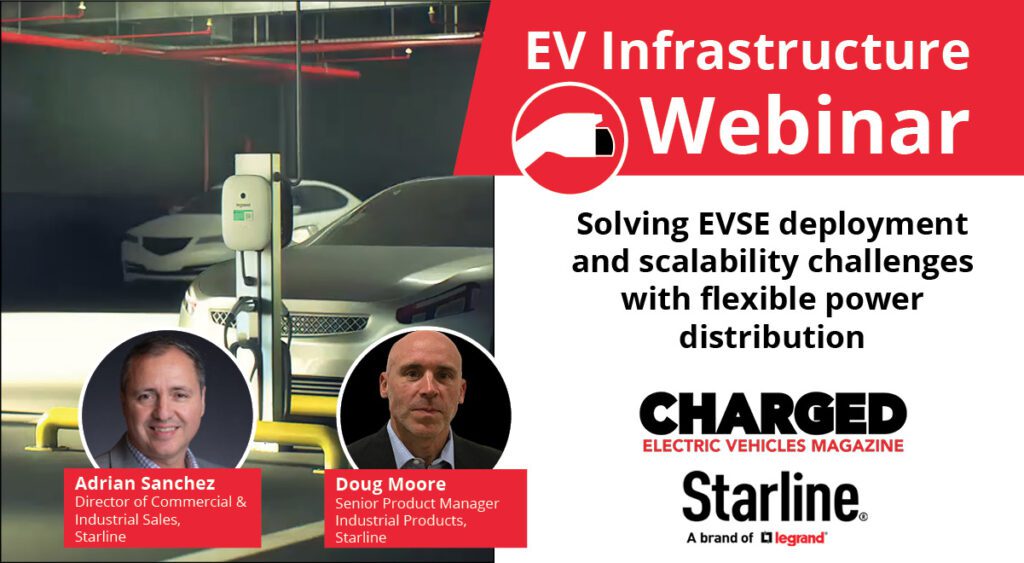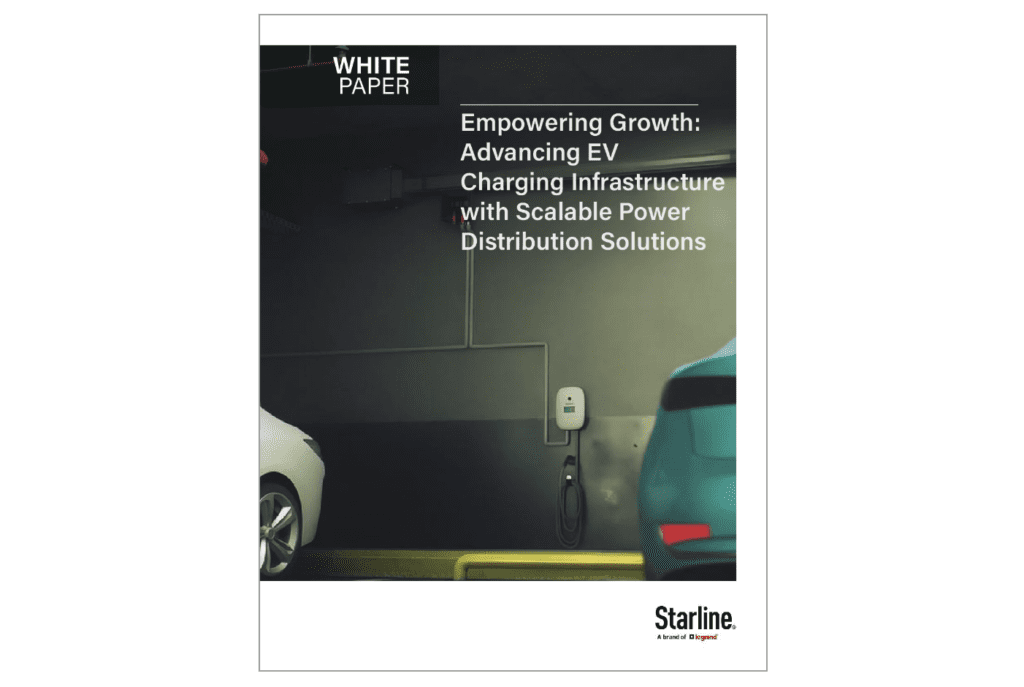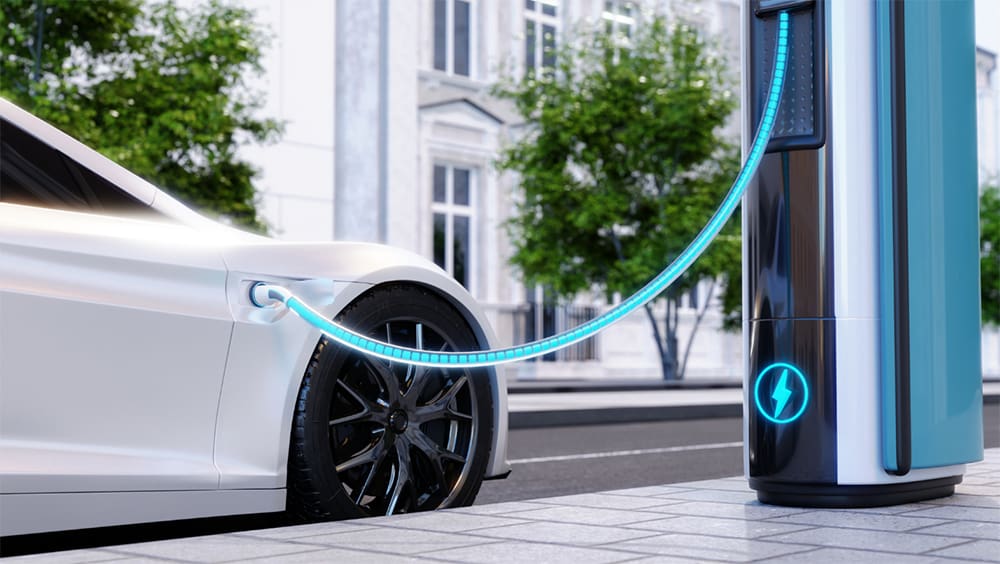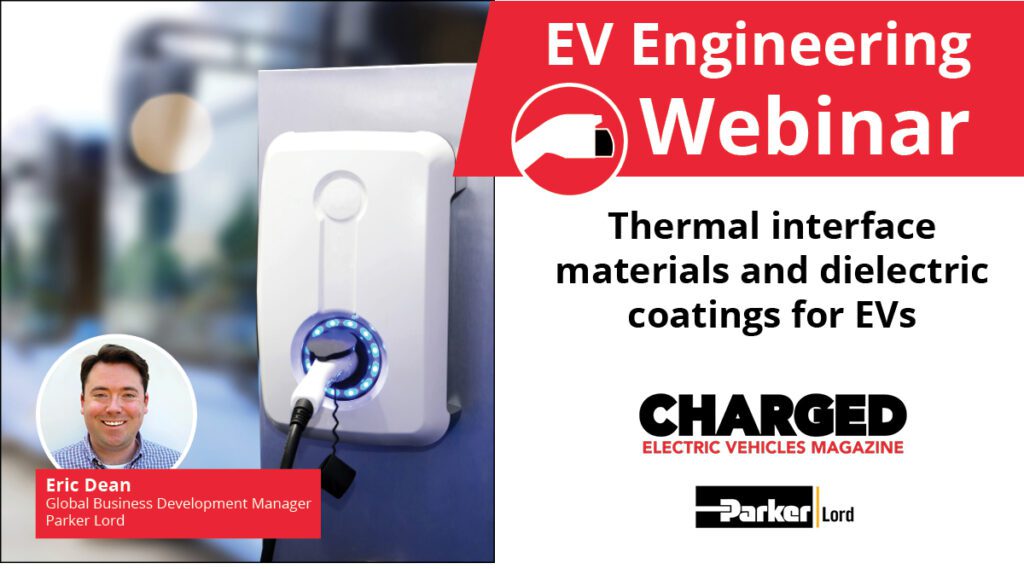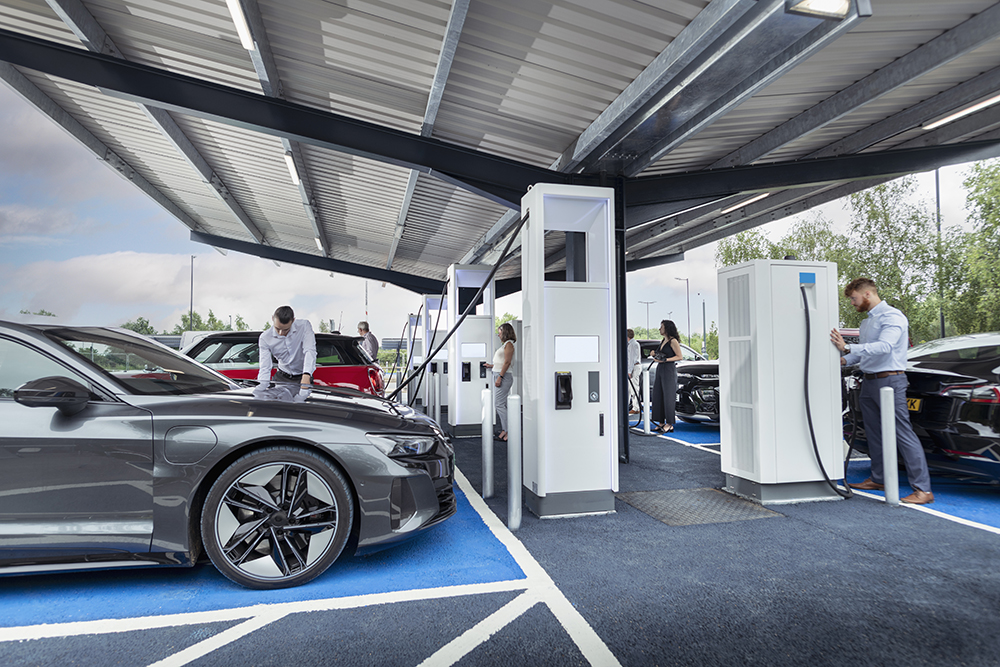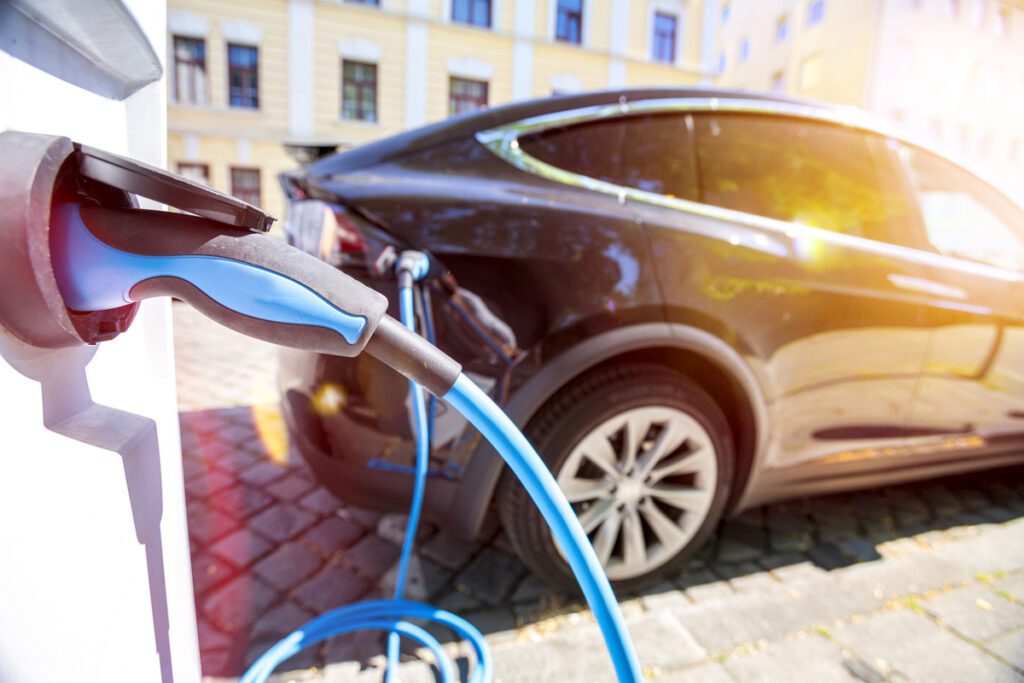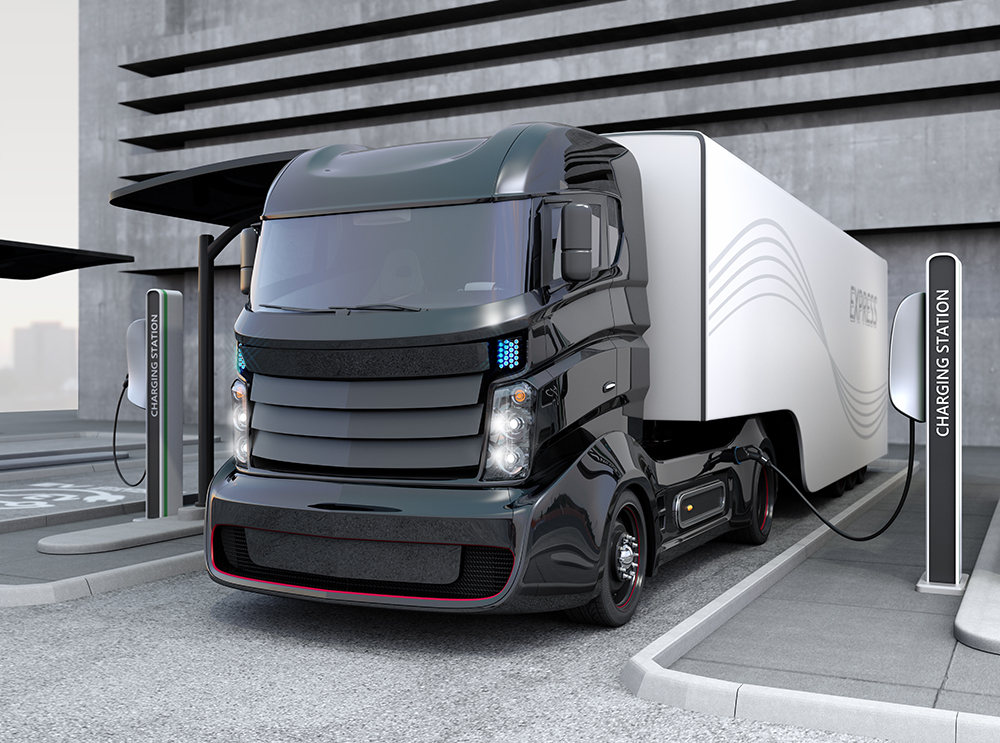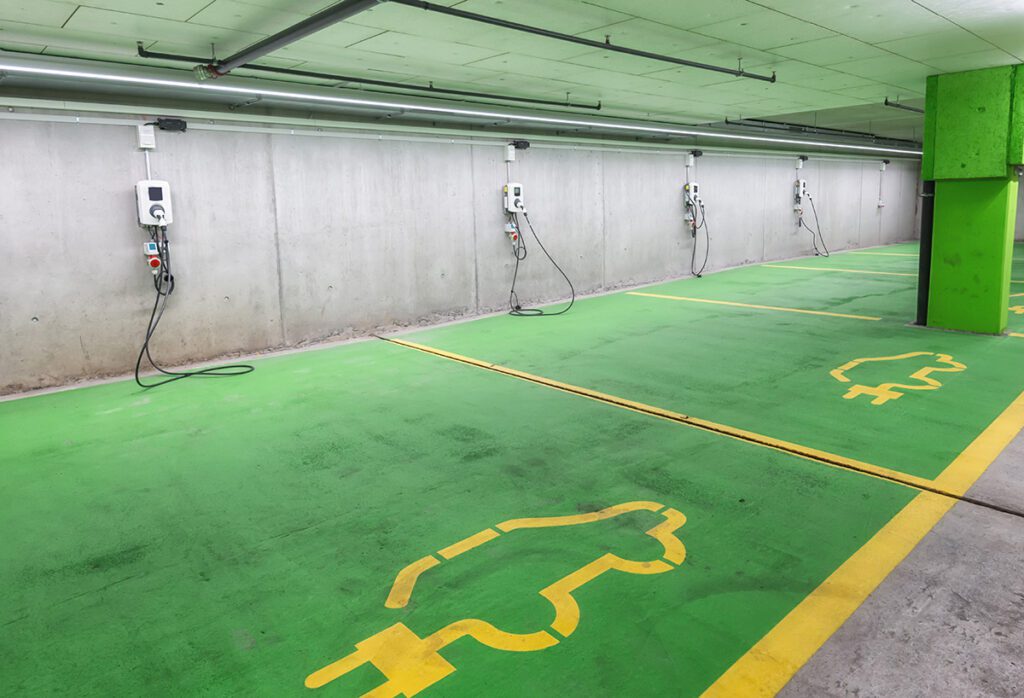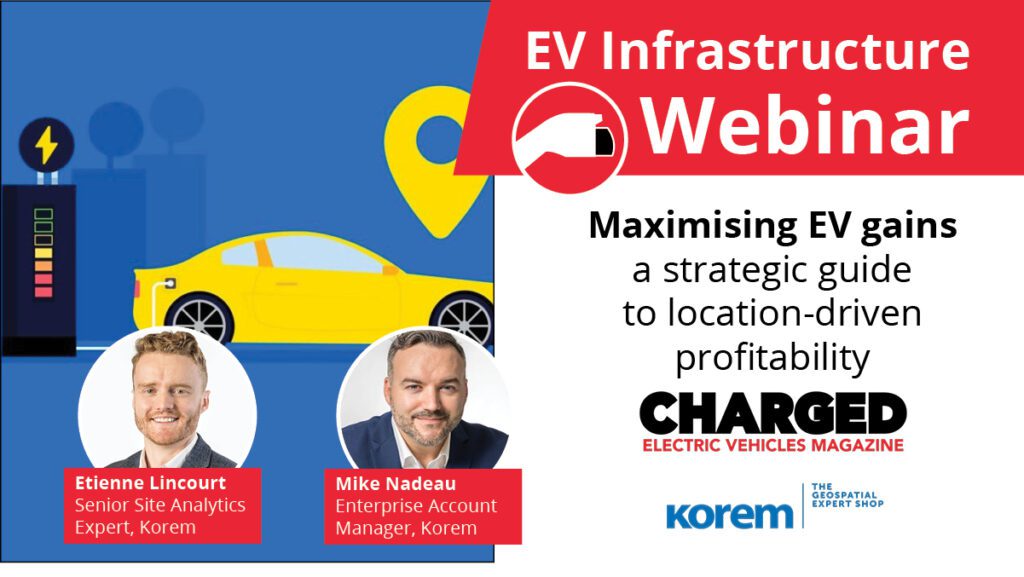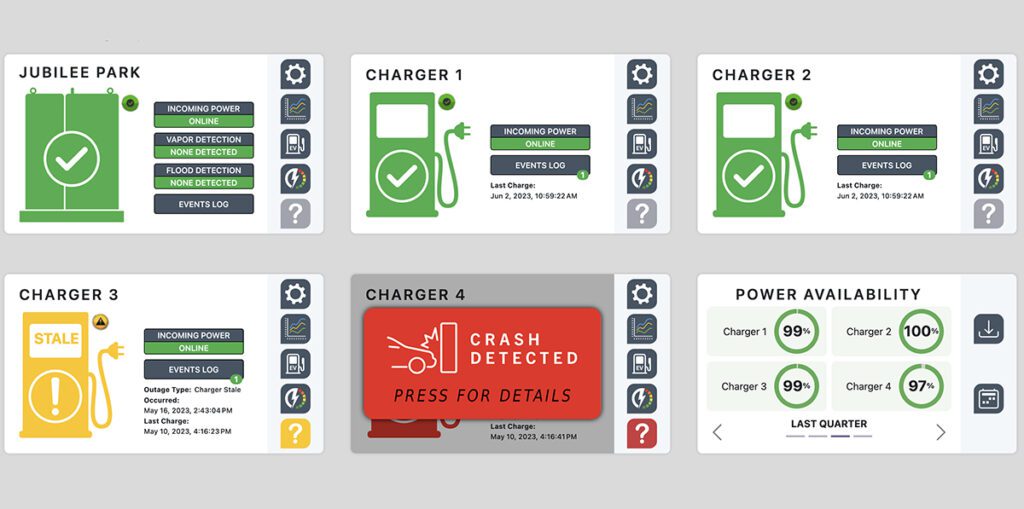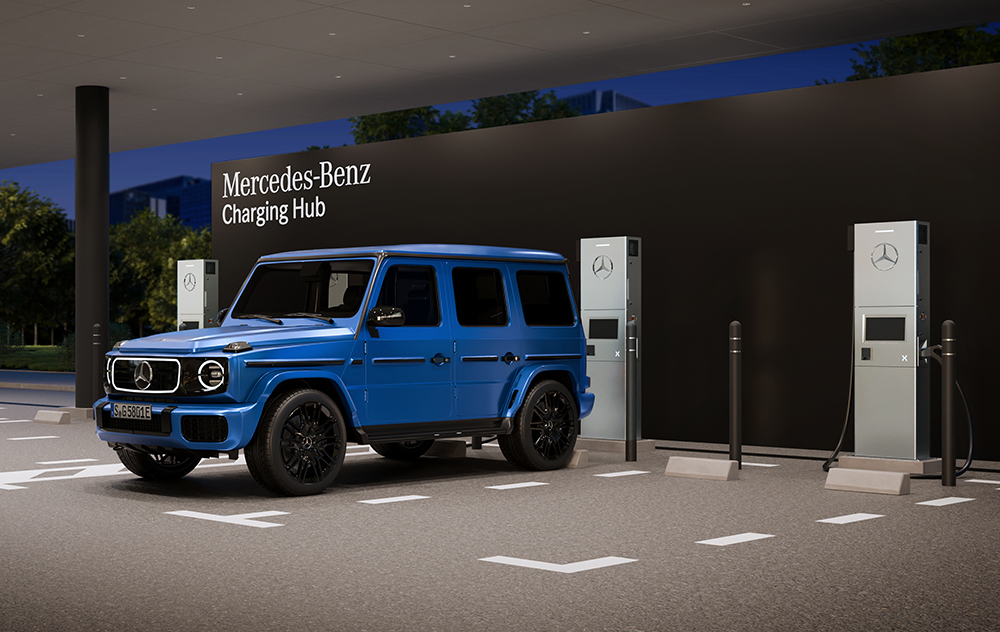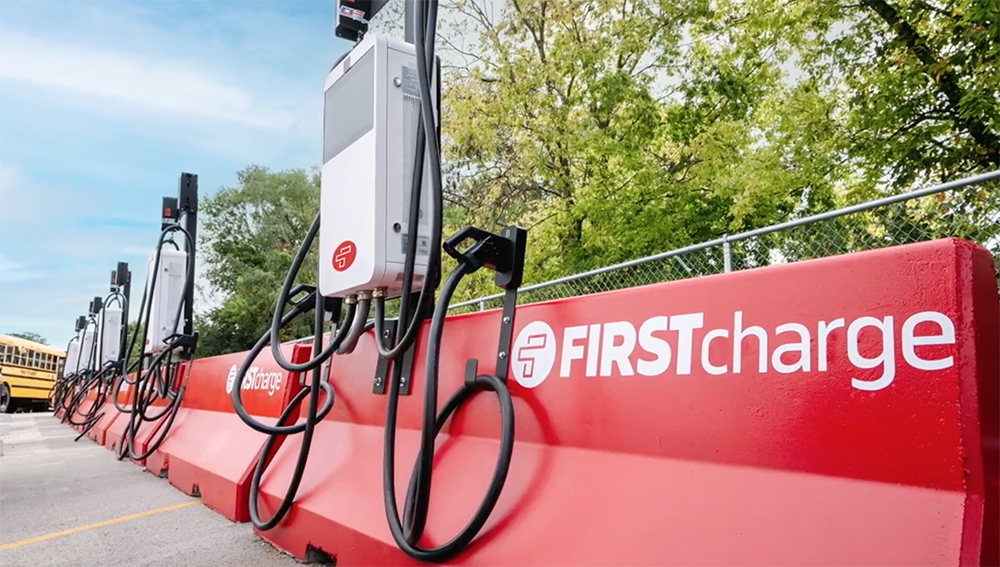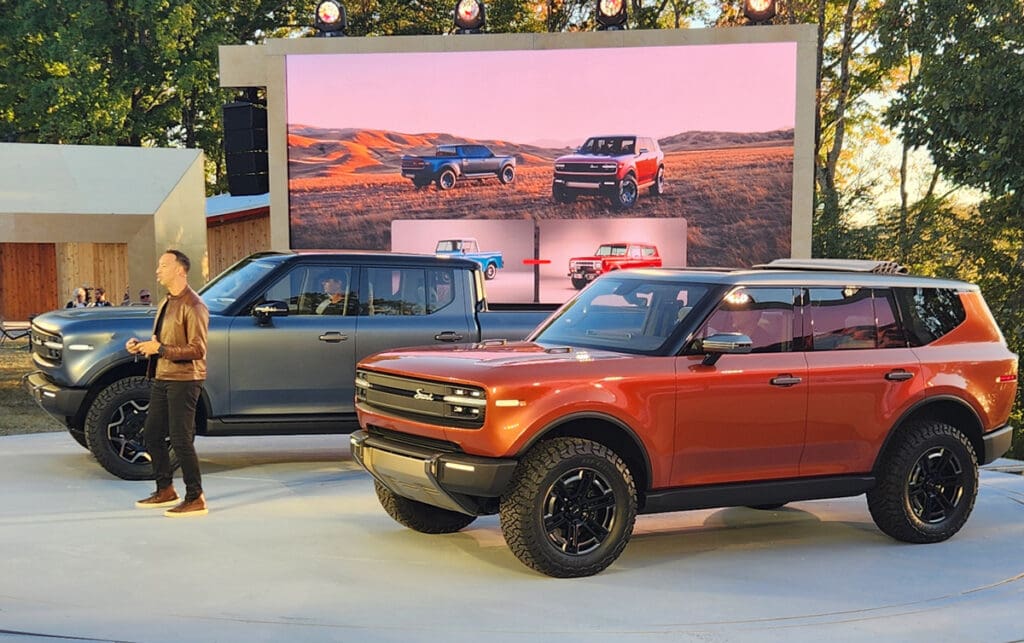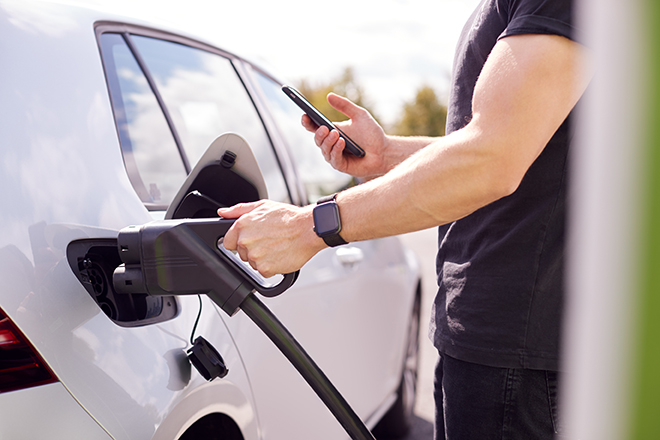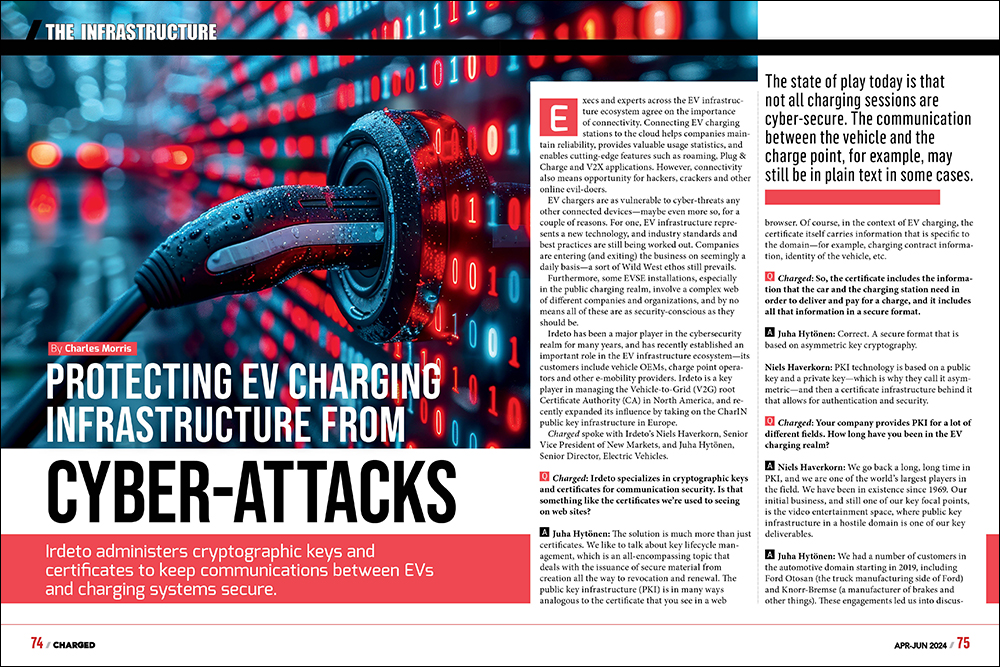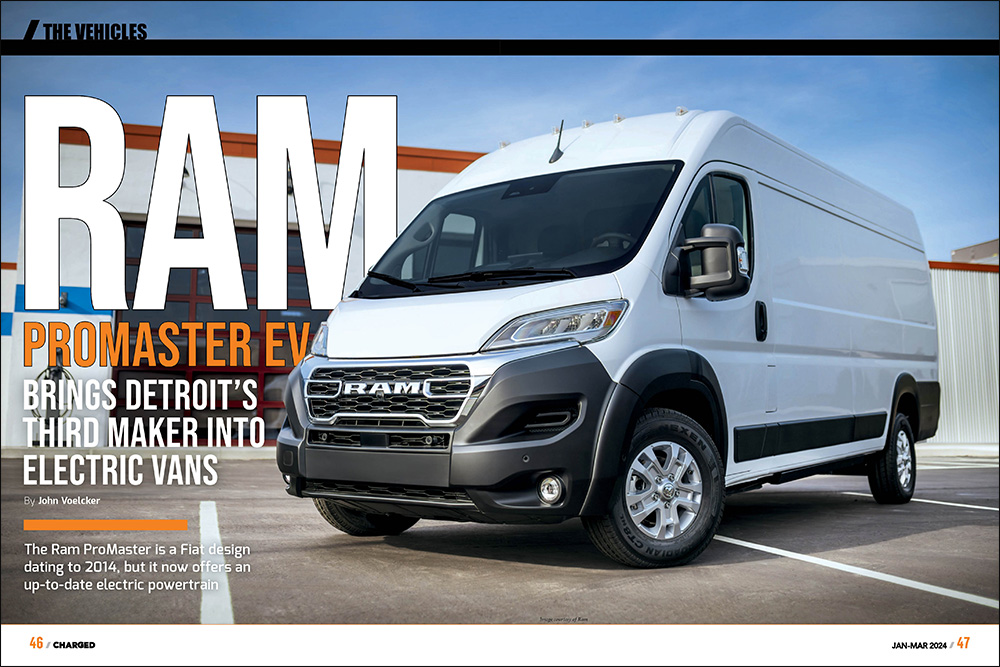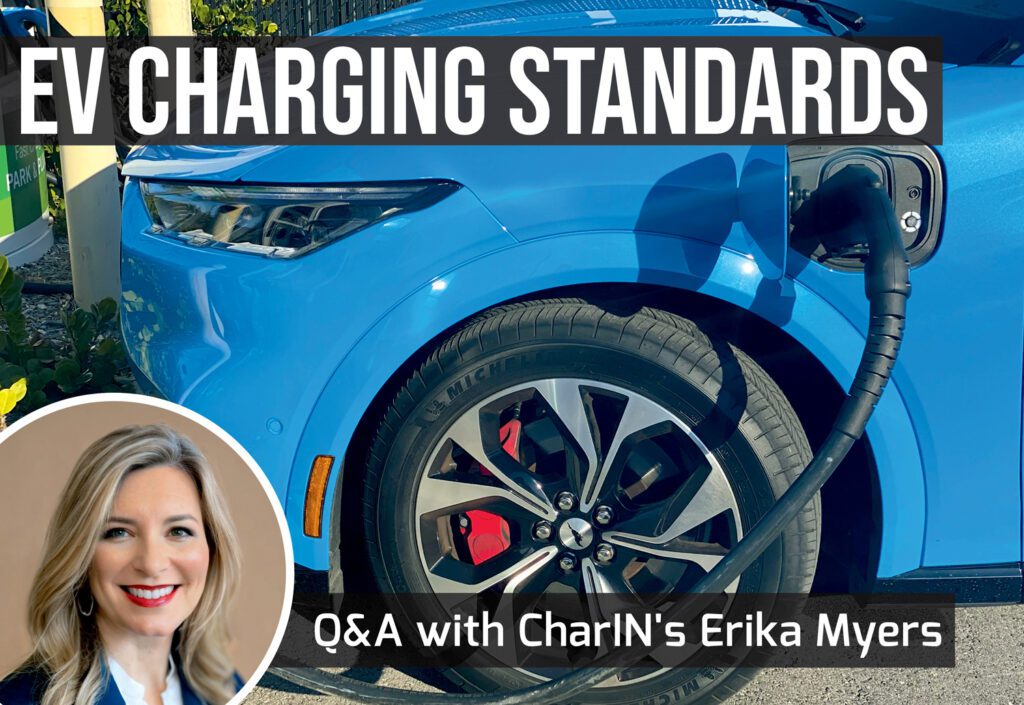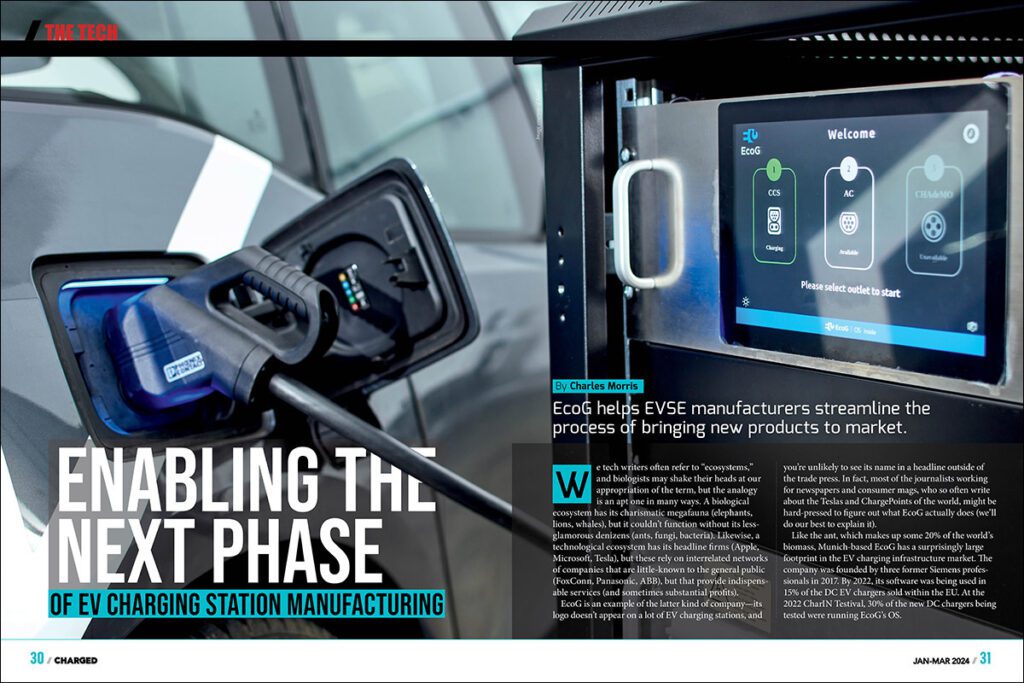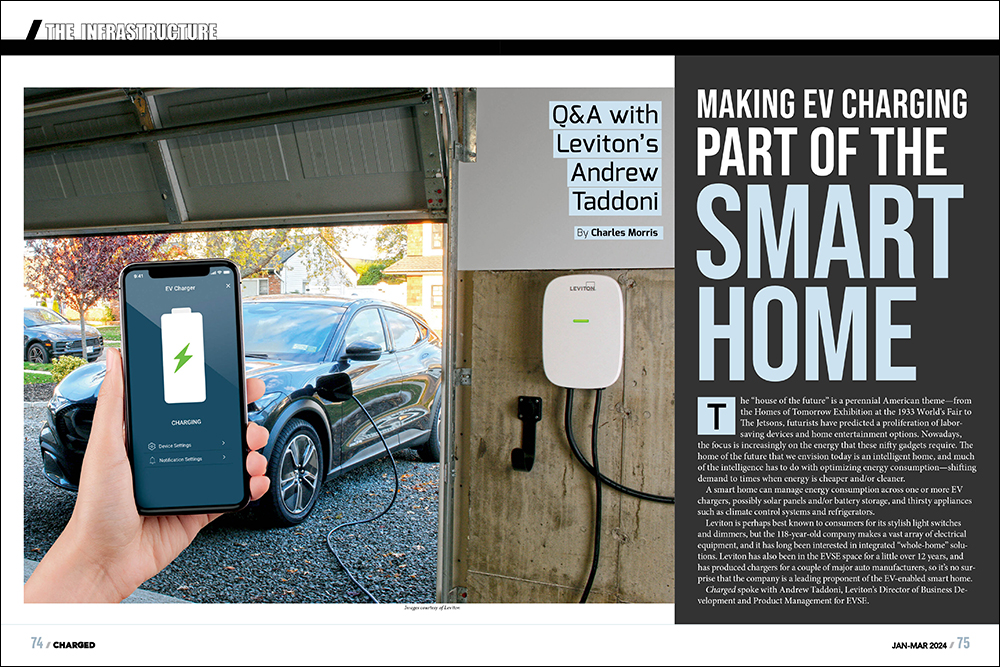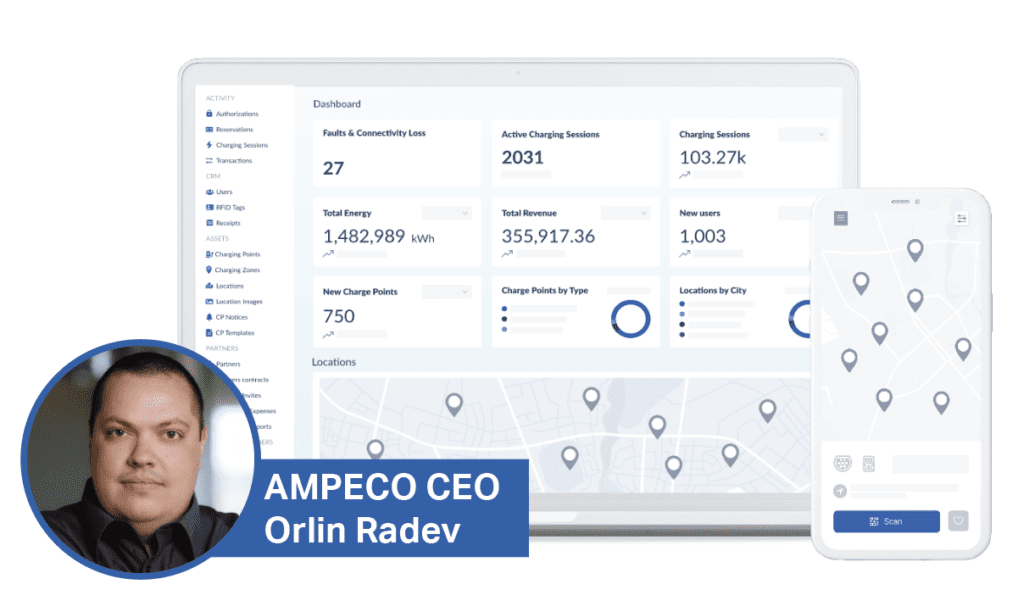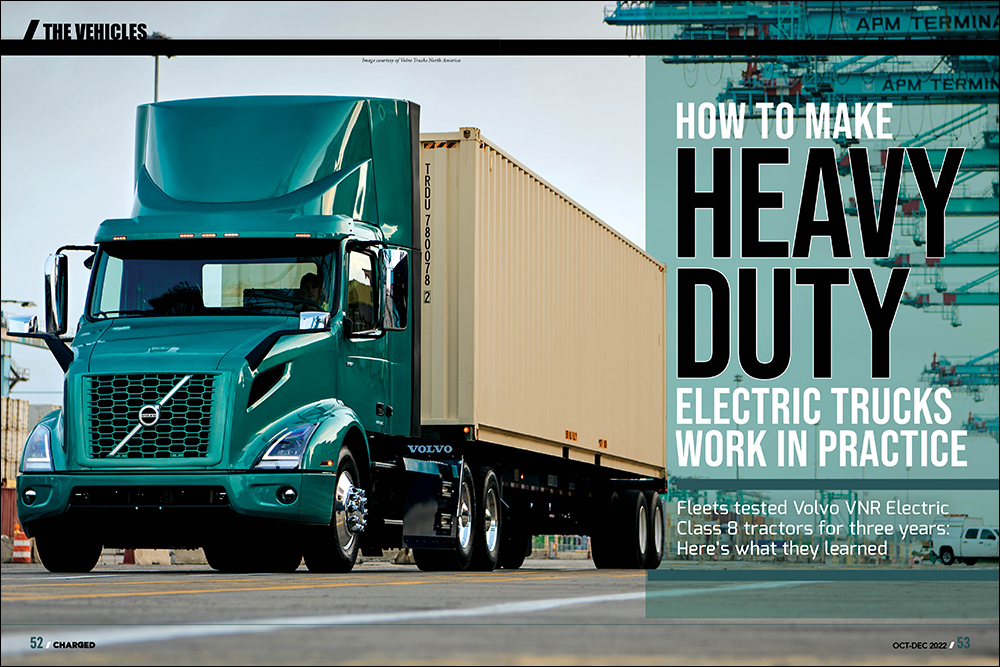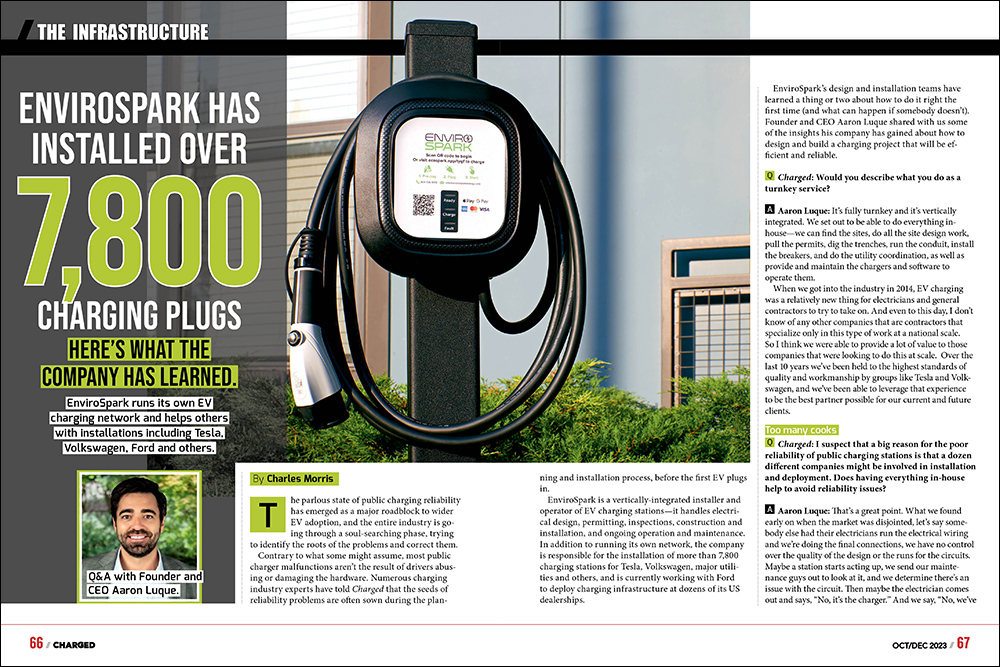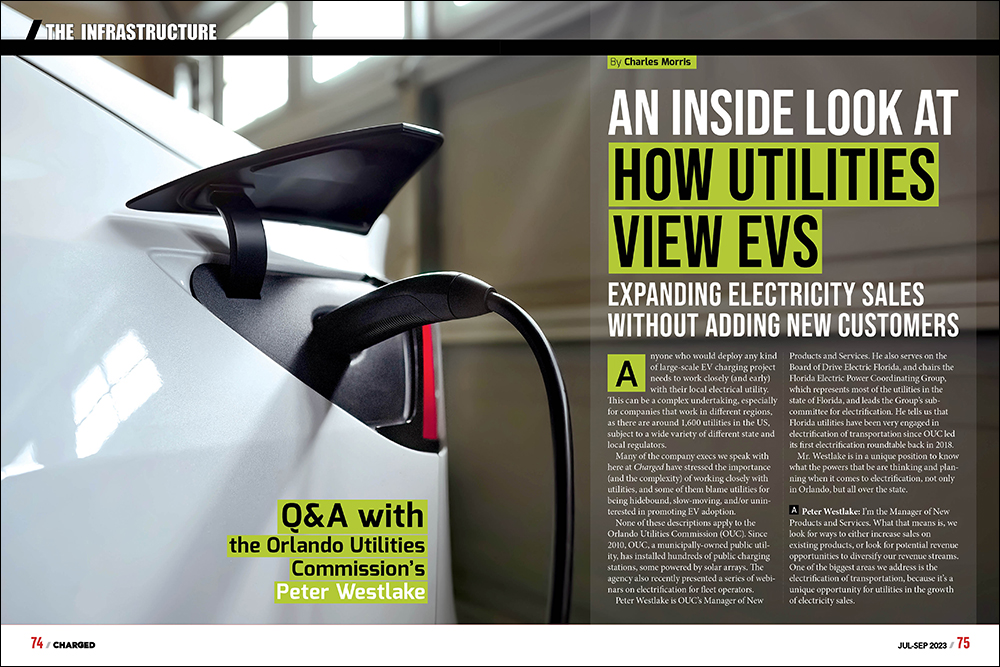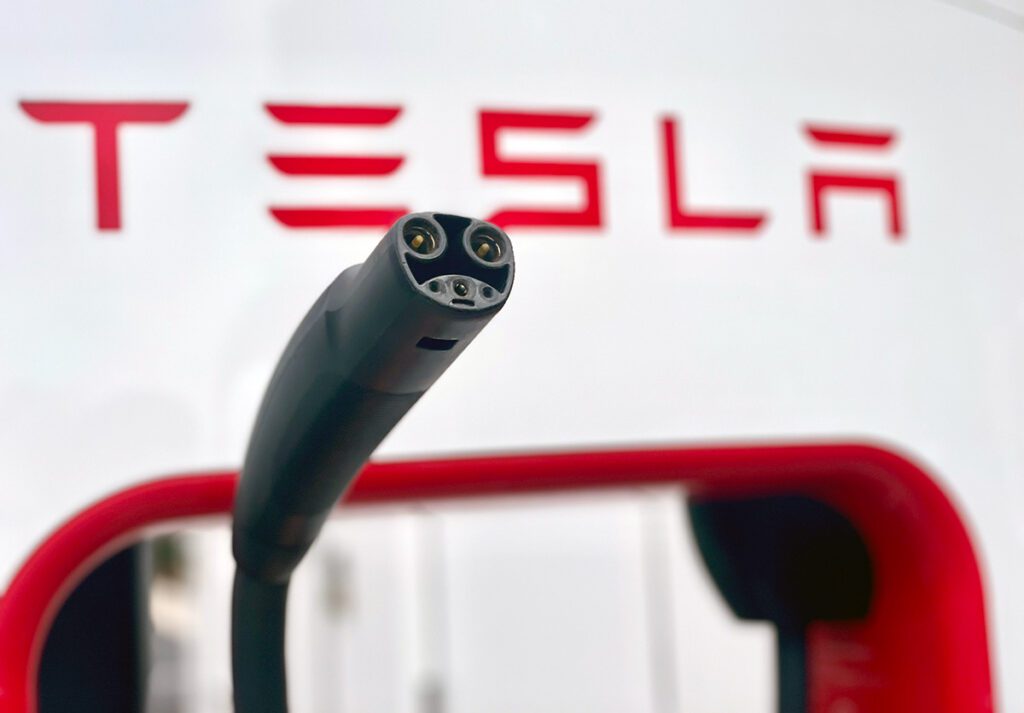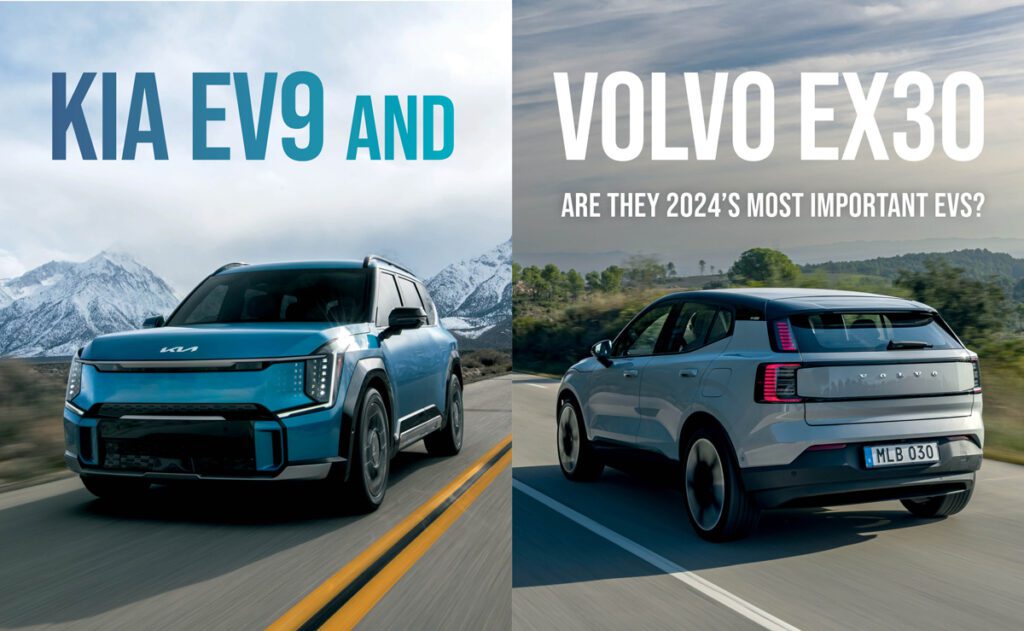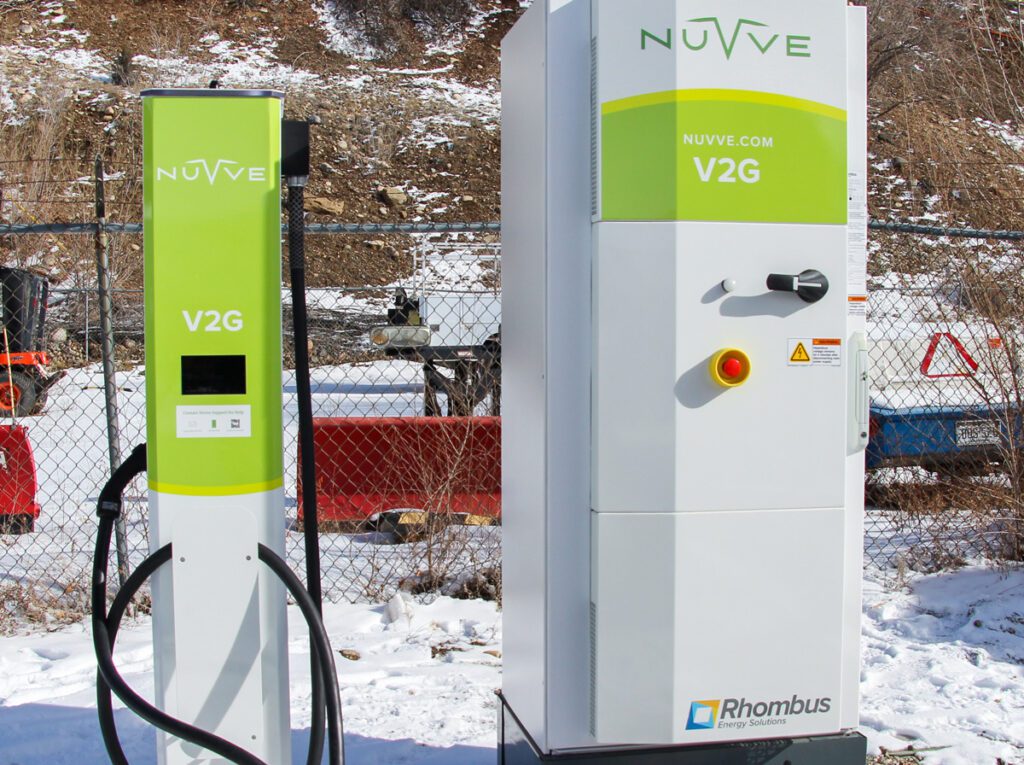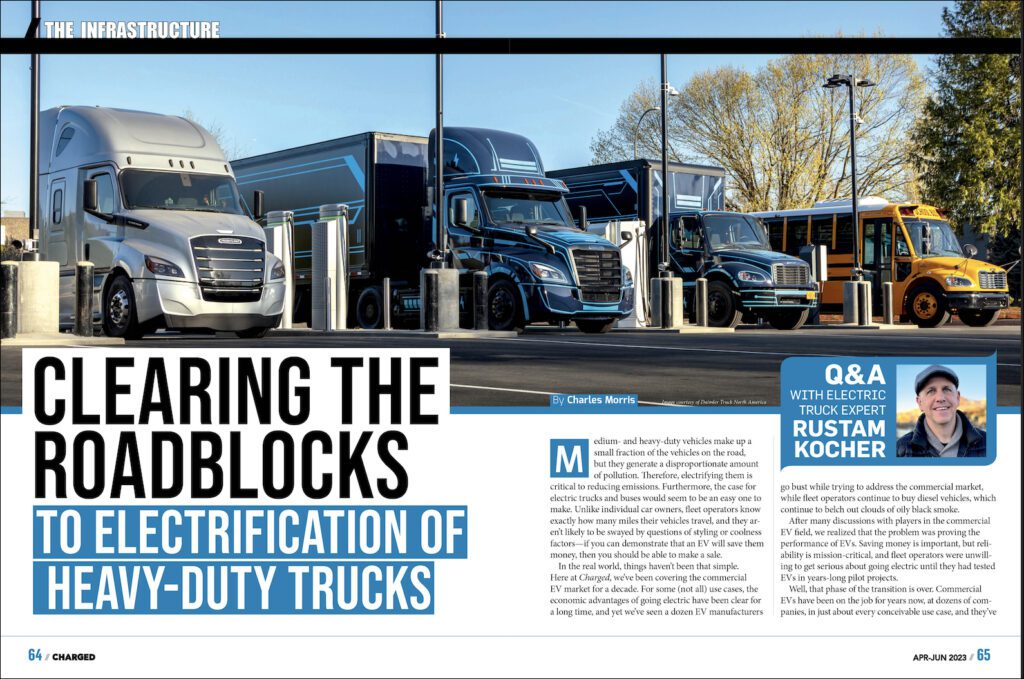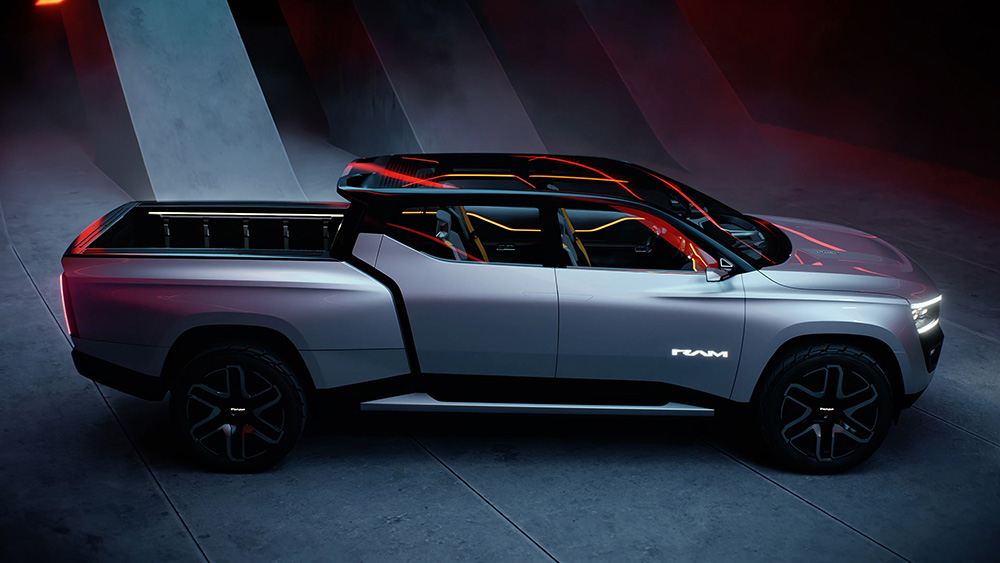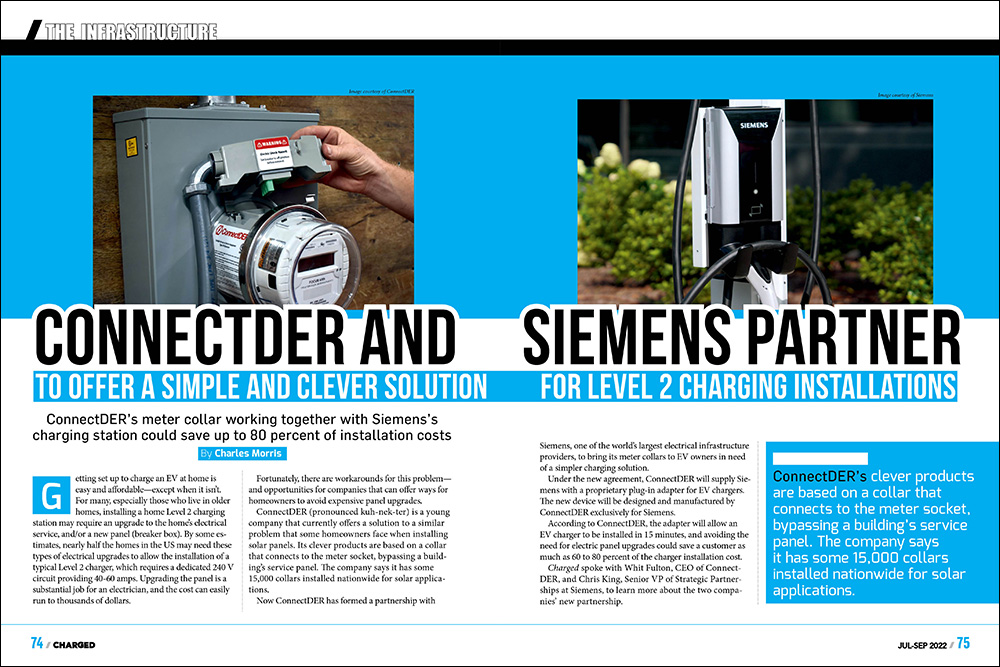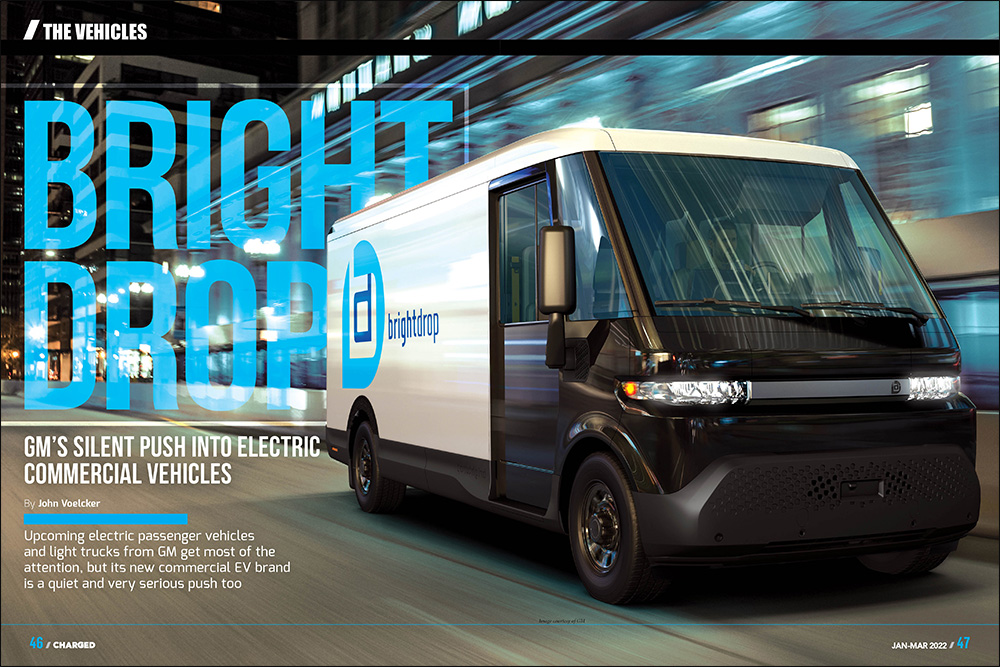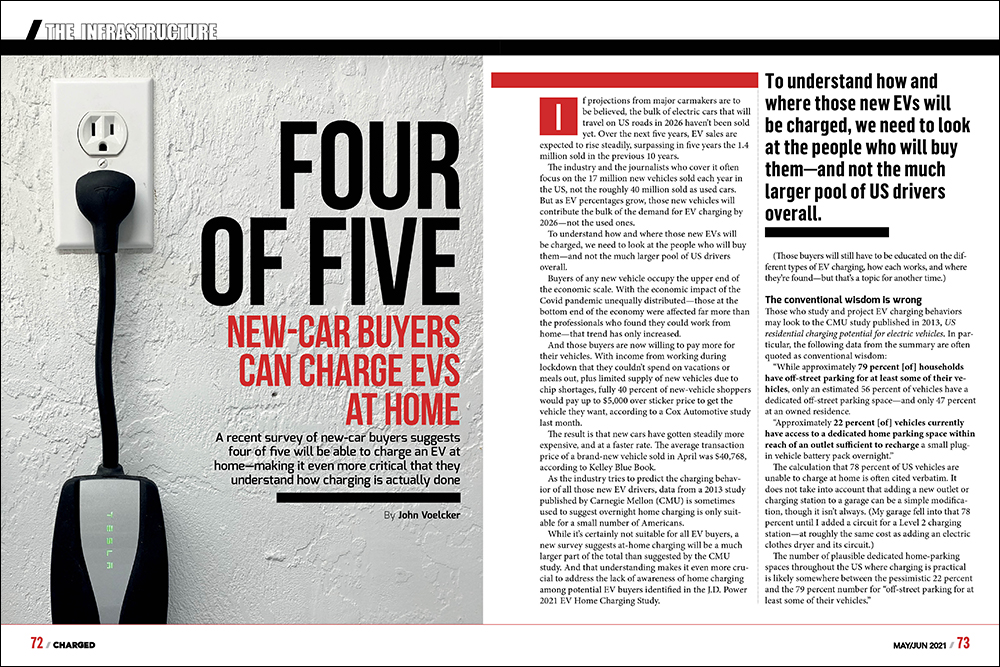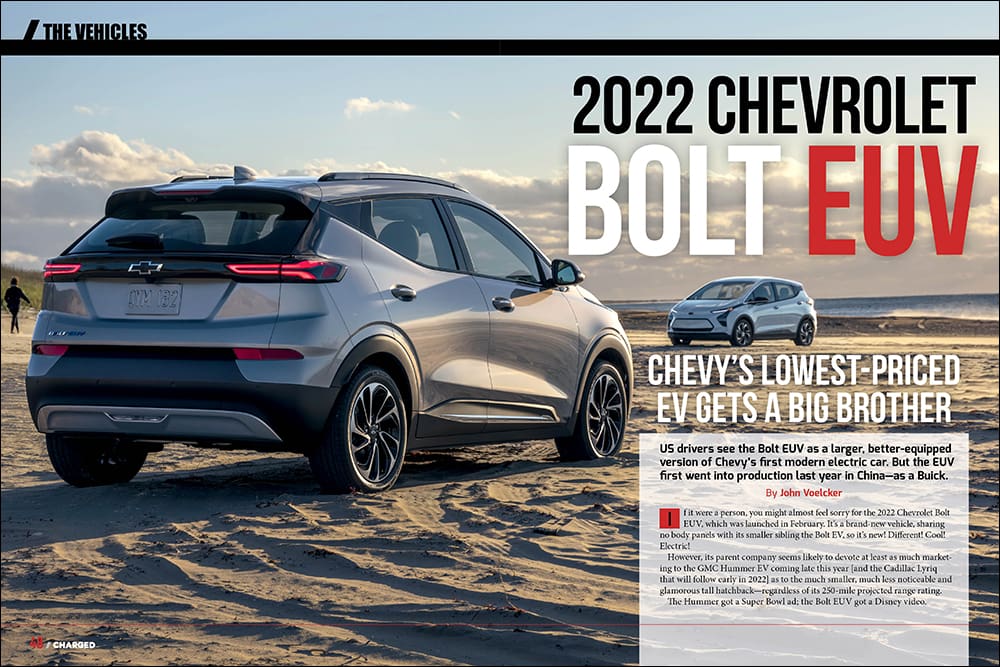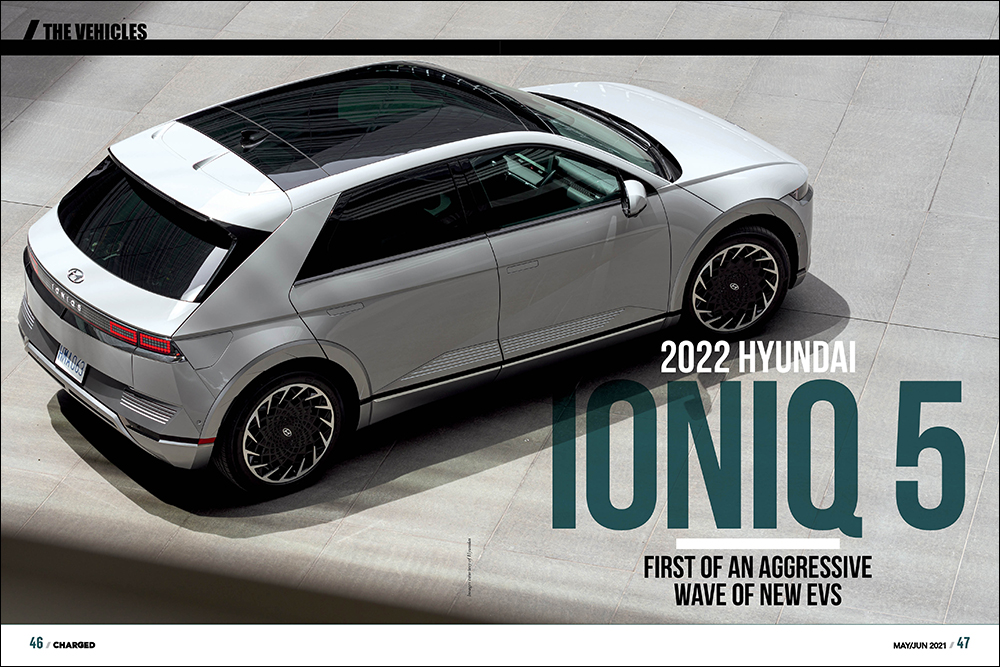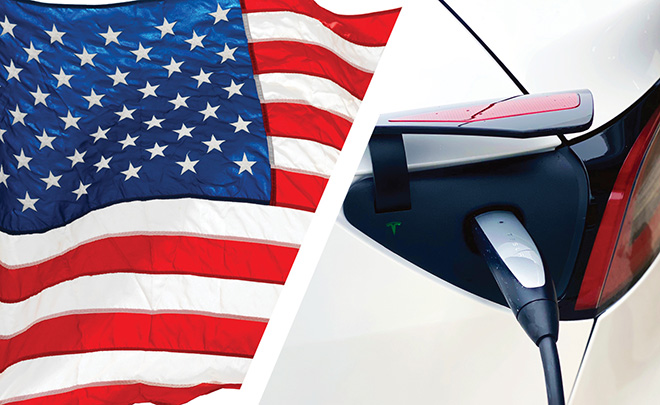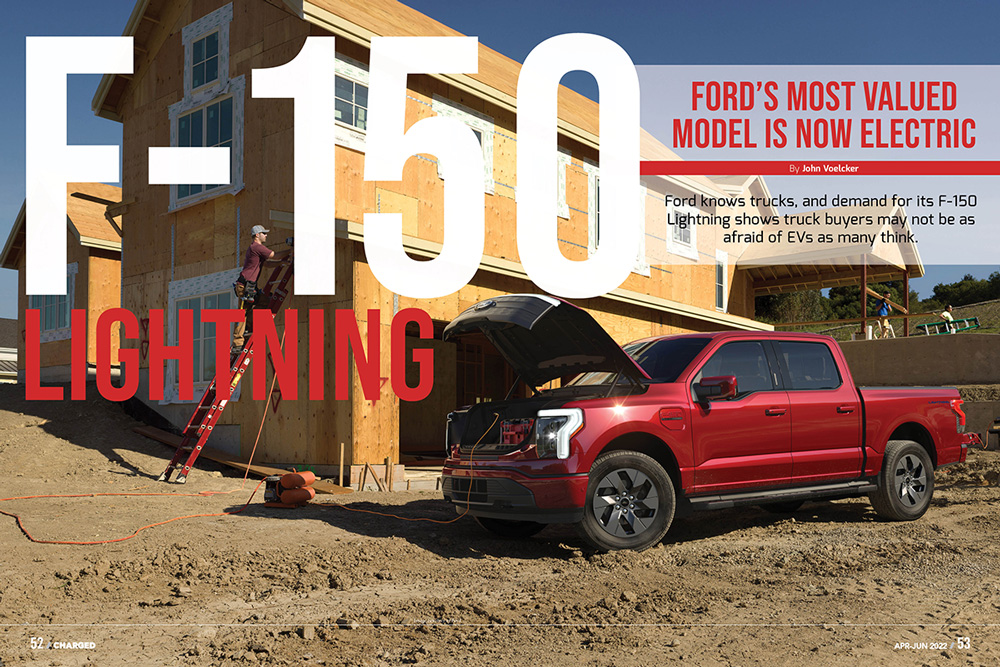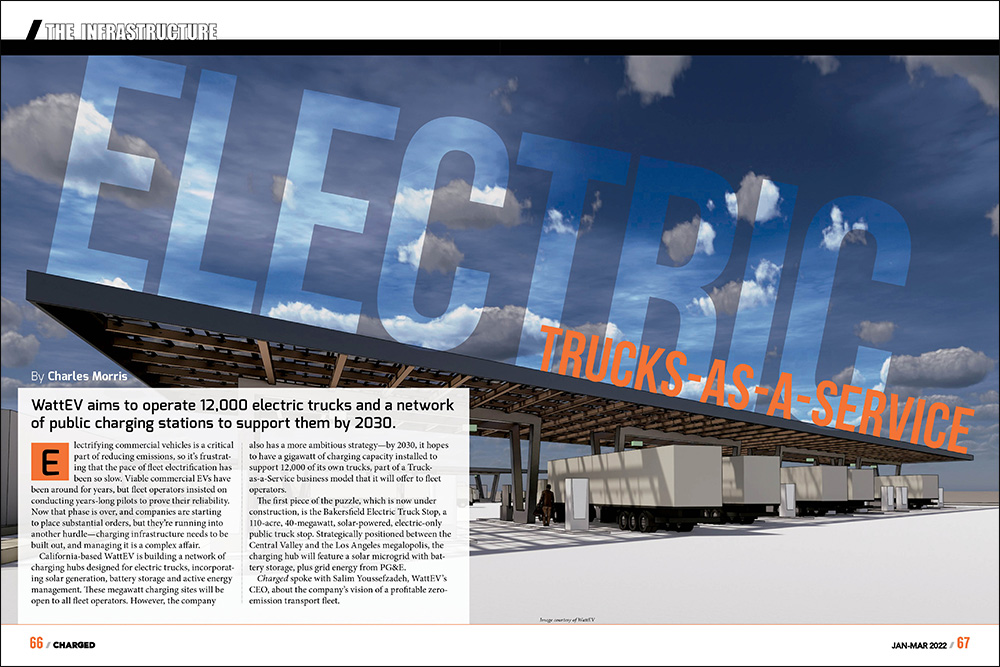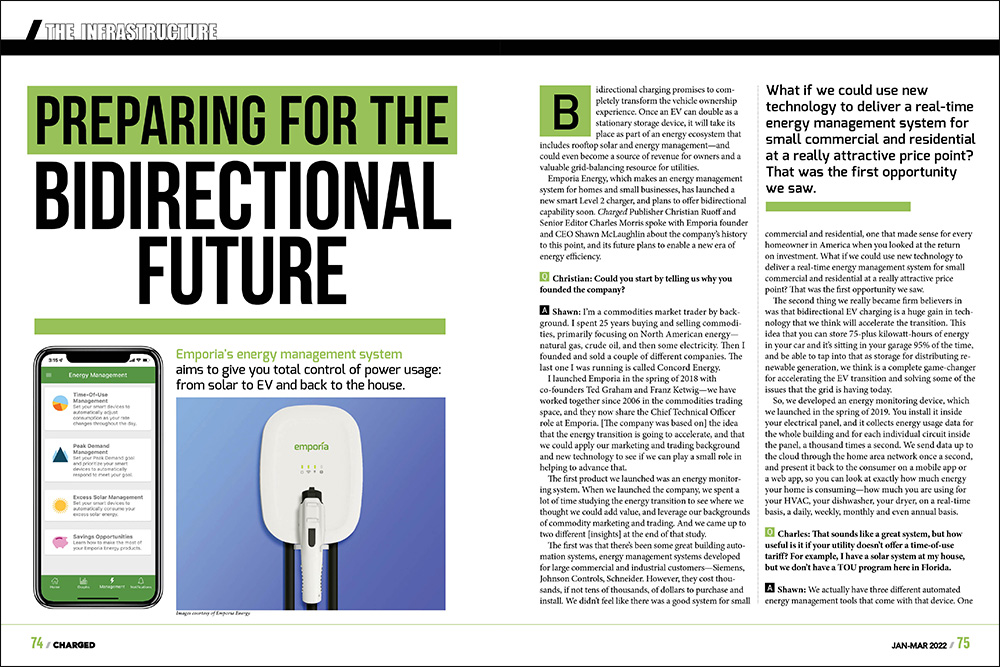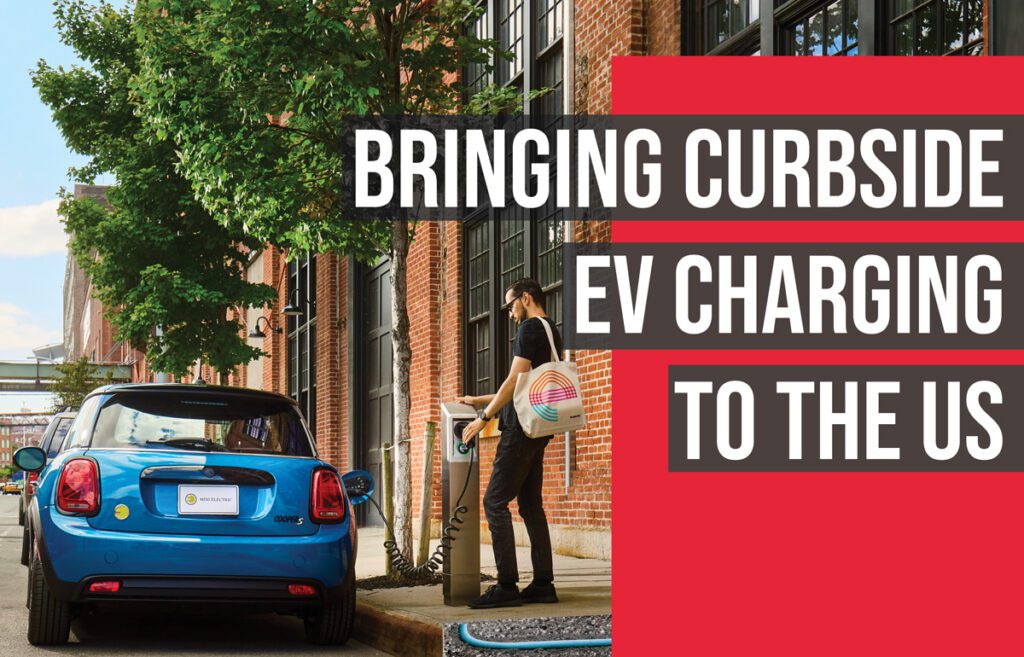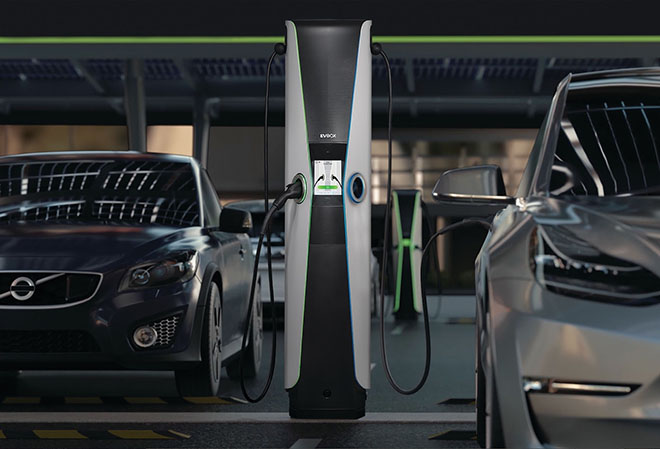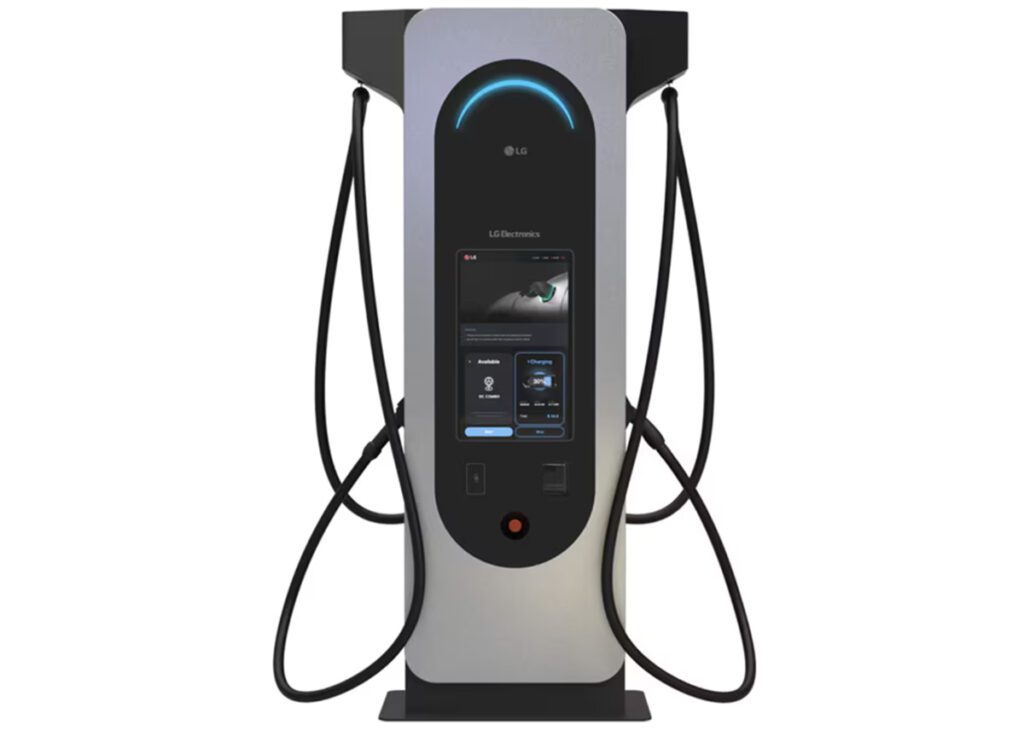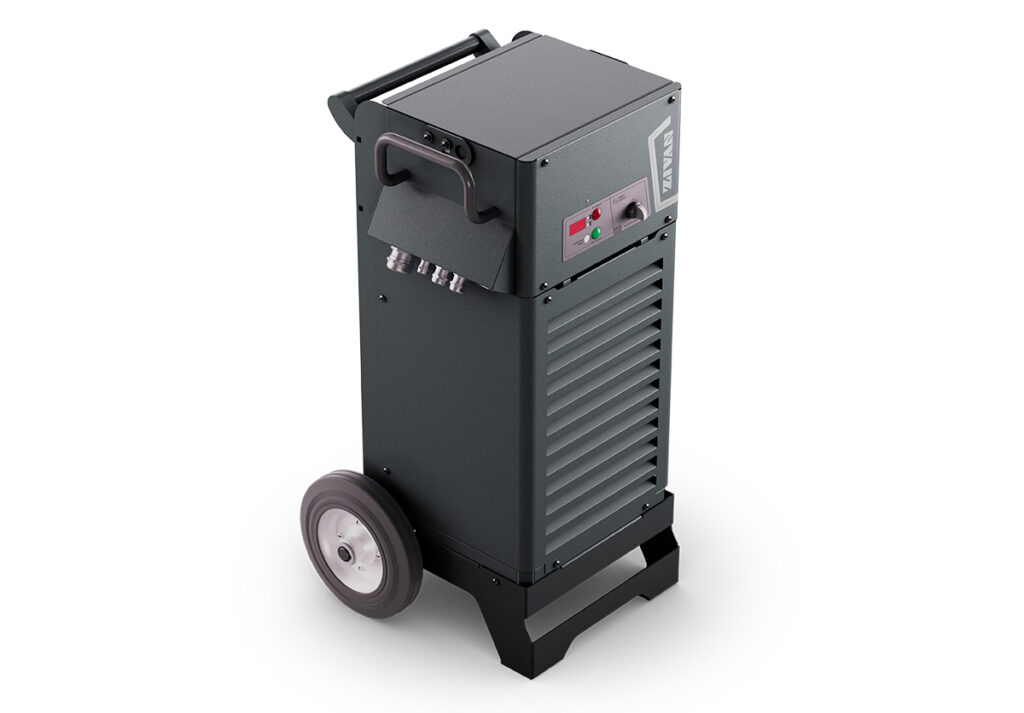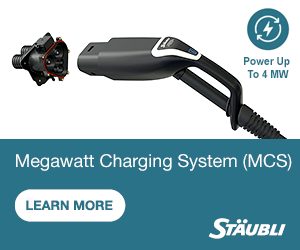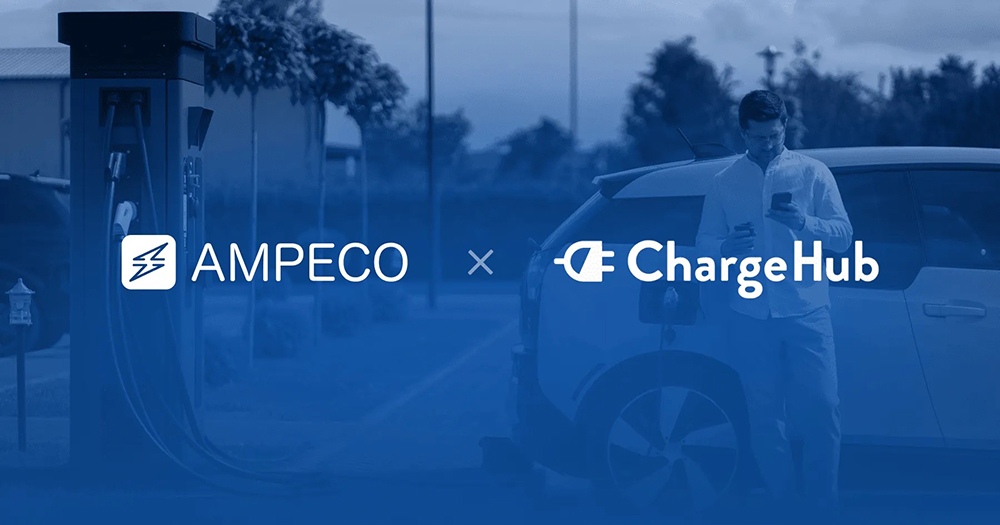To realize the full benefits of renewable energy, some form of energy storage is critical – this is one reason why EVs and renewables are complementary technologies. So it’s no surprise that SolarCity (Nasdaq: SCTY) has unveiled a smart energy storage system that was developed with battery technology from Tesla (Nasdaq: TSLA).
SolarCity’s new DemandLogic system uses intelligent management software to reduce businesses’ peak demand, which can mean big savings on demand charges.
So-called demand charges are fees that utilities impose on commercial properties when the peak power used rises above a specified threshold. Utilities use demand charges to penalize high power consumption during peak periods, and they can be enormous. As a recent Charged article explained, operators of public EV charging stations can easily run into expensive demand charges. An energy storage system that buffers the EVSE unit from high power demands during charging could be a way to avoid them.
While overall electricity usage in the US has increased only 10% since 2001, utility revenues have increased more than 50%, a situation that some blame in part on increased use of demand charges. Because demand charges are based on peak demand rather than on the overall amount of electricity consumed, even companies using less electricity can incur high fees.
“Utilities have altered their rate structures such that demand charges are rising faster than overall energy rates, and businesses are bearing the bulk of those increases,” said SolarCity COO Peter Rive. “Time is money, but so are control and predictability. Our storage systems can give businesses the tools to address all three—delivering immediate savings, protection against escalating demand charges and optional, grid-independent backup power in case of outages.”
Part of the appeal of DemandLogic is that the system allows businesses to continue operating at full capacity, rather than reducing power usage, as in traditional demand response programs, Mr. Rive said.
SolarCity analyzes each organization’s energy usage, and customizes the system size to make it possible for businesses to save more on energy costs than they spend for the storage service.
The SolarCity systems, which are eligible for a 30% federal tax credit, will be made available to new solar customers signing 10-year service agreements, and are made to store about a third of the energy the solar array can produce. DemandLogic will initially be offered in parts of California, Connecticut and Massachusetts. Mr. Rive said the company would guarantee the demand charge reductions, which he expects to run around 20%.
Elon Musk recently noted that the battery cells used for DemandLogic have energy density of 200 Wh/kg vs 250 for those used in Model S, so short-term supply constraints shouldn’t be a problem.
“The economics and scale that Tesla has achieved in the automotive market now make stationary energy storage more cost-effective and reliable than it has been in the past,” said Tesla CTO JB Straubel. “We expect this market to grow very rapidly now that we have crossed this economic threshold.”
Source: SolarCity, New York Times



